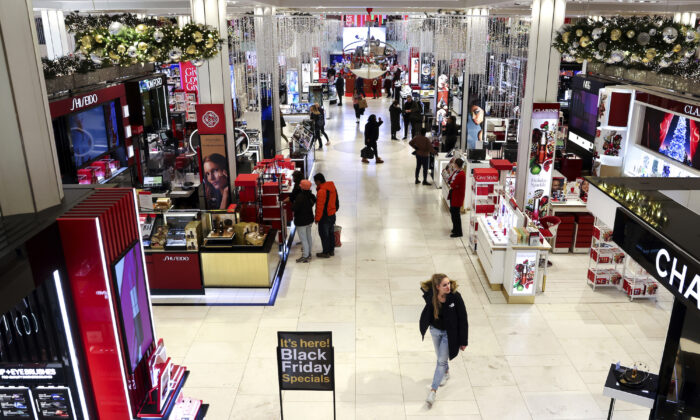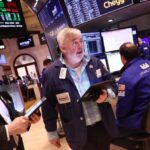By Tom Ozimek
Thin crowds of inflation-weary shoppers hunted for Black Friday deals, with foot traffic remaining sparse in many malls across the country as Americans instead flocked online, where they spent a record $9.12 billion.
Around 166 million people were planning to shop from Thursday’s Thanksgiving holiday through this coming “Cyber Monday,” according to the National Retail Federation, almost 8 million more than last year.
But many physical stores were less busy than usual on Black Friday, with sporadic rain in parts of the country keeping people away, while some shoppers said they were more careful with their spending, making targeted purchases rather than impulsive buys.
“We’ve been waiting” for discounts, said 28-year-old Tulio Rose, who picked up a big-screen TV at a Best Buy store in Los Angeles, saving around $500 on the purchase.
Unlike some previous years, there were no lines on Black Friday outside the American Dream mall in East Rutherford, New Jersey.
“Usually at this time of the year you struggle to find parking. This year, I haven’t had an issue getting a parking spot,” Marshal Cohen, chief industry adviser of the NPD Group Inc., told Reuters.
“It’s a lot of social shopping, everybody is only looking to get what they need. There is no sense of urgency,” Cohen added, based on his store checks in New York, New Jersey, Maryland, and Virginia.
At some malls, however, traffic was higher this year than last, some executives said.
Macy’s CEO Jeff Gennette said that the traffic was “significantly larger” on Black Friday compared to the previous two years because shoppers feel more comfortable in crowds.
Customer traffic was also higher than last year at Mall of America in Bloomington, Minnesota, according to Jill Renslow, executive vice president of business development of the shopping center.
But while foot traffic was sparse in many parts of the country, online sales soared to record highs.
Online Spending Soars
Online spending rose 2.3 percent on Black Friday, Adobe Inc.’s data and insights arm Adobe Analytics said, with shoppers spending a record $9.12 billion in stores on the Internet.
Shopping trends this year were a contrast from a year ago when consumers were buying early for fear of not getting what they needed as snarled supply chains led to shortages. This year, inventory gluts led to steeper discounts.
On Thanksgiving, the average discount rate in the United States across all categories online was 31 percent, up from 27 percent the previous year, according to Salesforce data.
The five-day Black Friday weekend, which includes Cyber Monday, is widely viewed by analysts as a key barometer of consumer strength.
The period between Thanksgiving and Christmas typically accounts for around 20 percent of retail sales.
Consumer spending is a key driver of the U.S. economy, accounting for around two-thirds of gross domestic product (GDP).
Reuters and The Associated Press contributed to this report.






